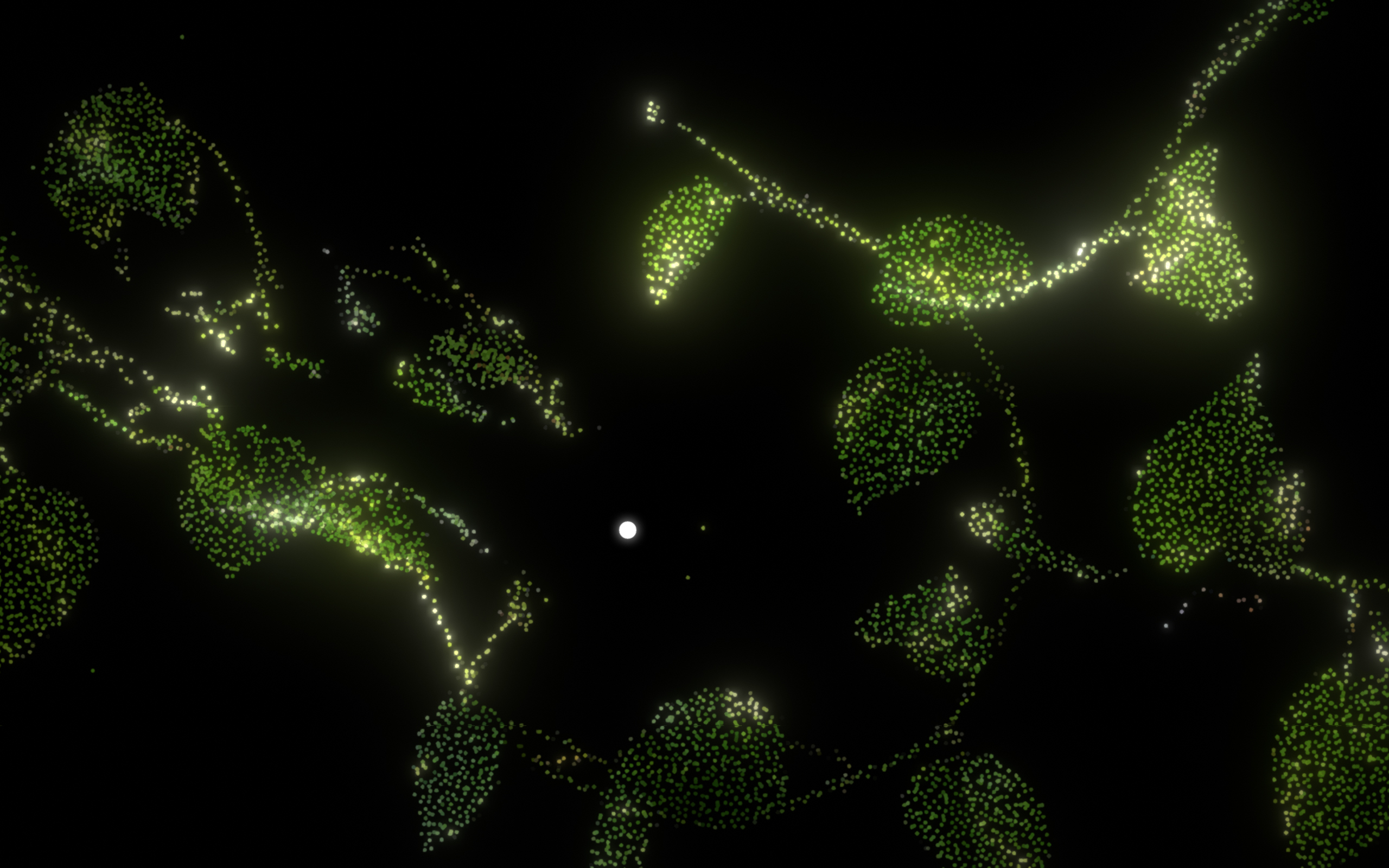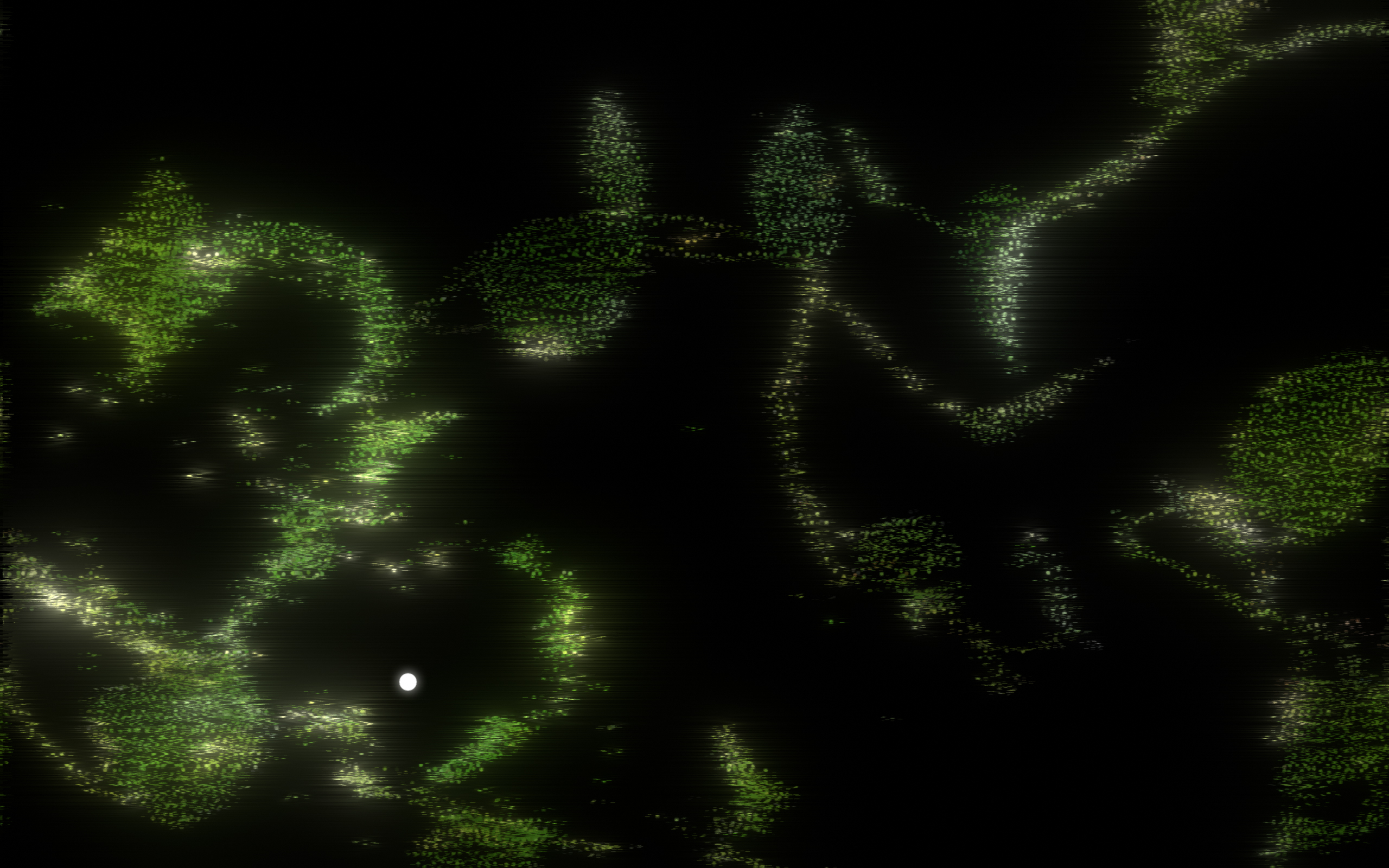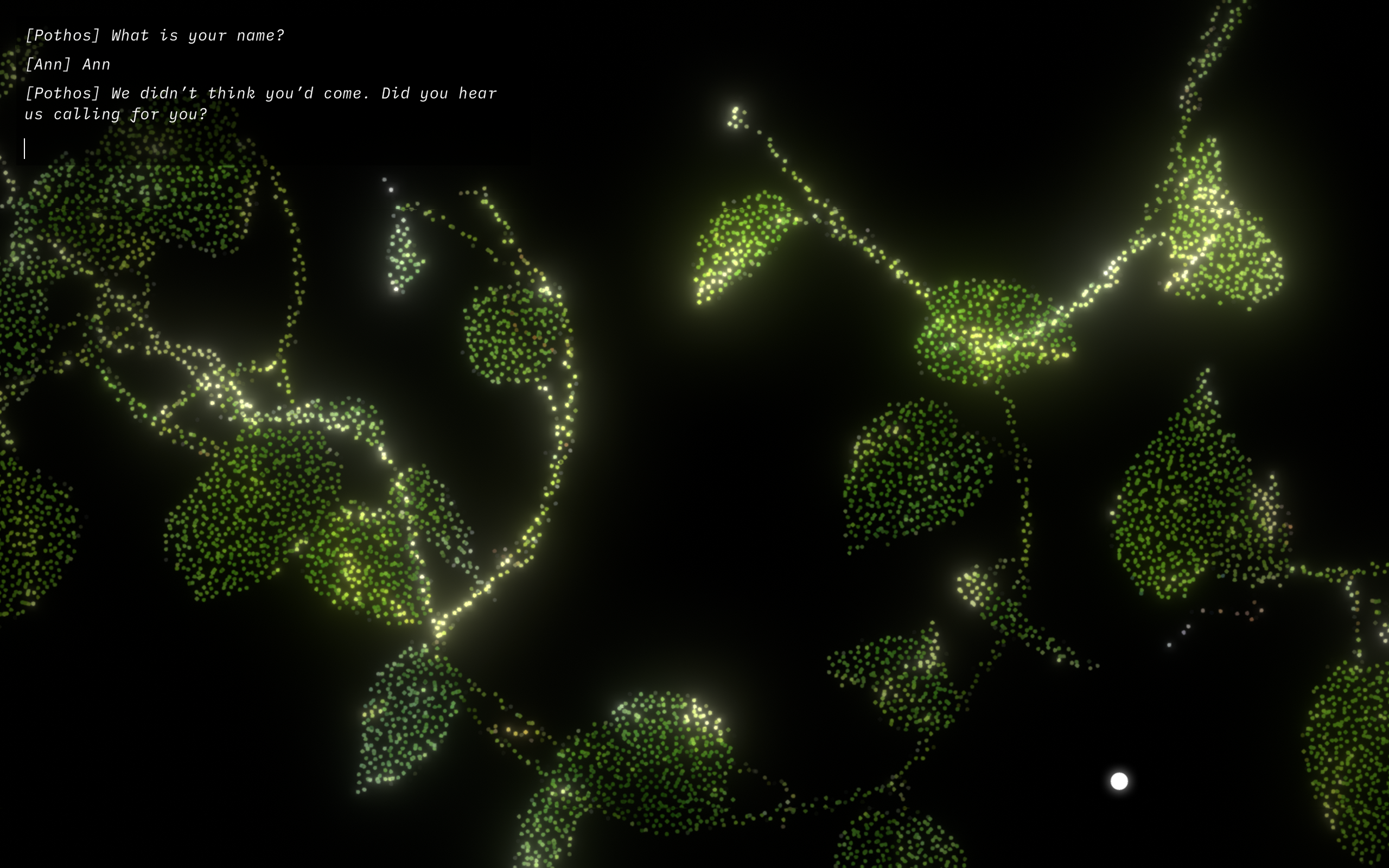EXHIBITIONS
Boolean Garden
Media and Arts Technology Centre
Queen Mary, University of London
London
2020
︎︎︎Visit the .garden (Desktop only)
An exercise in techno-mysticism, Boolean Garden sets a stage on which technology, in the form of computer programming, and nature, in the form of plant life and its esoteric qualities, can be observed side-by-side. The premise, which asserts that the natural is computational and vice versa, is reminiscent of the laws of sacred geometry. The project pursues this proposition by communicating natural and folk histories through a channel more associated with the future.
The Boolean Garden narrative begins with two stories of vanishing that are centuries apart. Apúng Sinukuan, a mountain deity from Mt. Arayat on Luzón island, grows weary of greedy lowlanders and retires from guardianship; E. aureum (common name: pothos), quintessential houseplant, shuns the neglect of busy homeowners and ceases to flower. Obliquely, ancient wisdom about the relationship between man and the natural world then unfolds through a piece of 2-D interactive media, created using CGI software and adapted for online exhibition. The apparent incongruence between message and medium only serves to expose an underlying congruence: nature and technology can be mutualistic.
Within the dotgarden, a virtual experience is designed to instigate a (re)discovery of the magico-natural on a technology-assisted scale: a scale wherein vegetal time is compressed within the limits of human perception. The resulting simulation of biorhythmic synchronicity allows the digitised plants to demonstrate movement and sentience on-screen, to the viewer’s naked eye. In being able to manifest that nature and technology are intrinsically linked through the interface-as-landscape, a case against the dominance of one and suppression of the other can be made.
Boolean Garden (Interface-as-Landscape) is the artist’s MSc dissertation and exhibition at Queen Mary, University of London. The application was online from July 2020 to 2021.
With special thanks to Nick Bryan-Kinns, Itos Ledesma and Nigel Rodriguez.
A prototype of Boolean Garden is a techno-botanical artefact called Dormilón.



